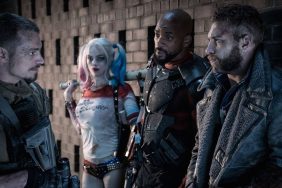
Blink your eyes, motherfuckers, and you die in the dark.
Vice Squad contains one of the greatest opening sequences in cinema history. This is only minor exaggeration, mind you. Director Gary Sherman flexes a solid set of visual storytelling muscles that simultaneously set up his pictures entre universe while also telling us everything we need to now about Princess (Season Hubley), the hooker with a heart of fools gold who guides us through its shit-stained side alleys. Saturated in the authentic filth of Skid Row circa 1981, this microcosm is a most violent Hellscape; nights filled with lecherous Johns, hard-nosed cops and Ramrod (Wings Hauser), a rhinestone cowboy pimp from Planet Fuck You. But before were even introduced to the cretins who haunt the night, were forced to say goodbye to the soft-lensed light of day and the comfort of Princess home on the outskirts of the city. Modestly furnished and sporting eggshell walls, this is safety. And every evening, Princess works her ass off to keep her and her young daughter far away from the warzone.
Fade in from black. The streets come alive. A bus station bathroom is Clark Kents phone booth for our seasoned lady of the night. Playing like the grindhouse doppelganger to Jamie Lee Curtis charitable prostitute character in Trading Places (which would hit theaters a mere eighteen months later) Season Hubleys transformation is incredible. With one perfectly executed edit, we see her two sides; transitioning from weeping mother, placing her kid on a bus to San Diego, into a purple stocking-sporting hustler. The tears are gone, replaced by a weathered woman who will let a man take a leak on her for the right price. Tragically enough, Hubley most sells the willful resignation of choice that Princess faces every single time she punches in her proverbial pussy-selling timecard. She has no other options. This is the only way to survive. But while shes out in that battlefield, shes not going to let any jive talking wannabes rob her of her time. For theyre not even close to being able to handle business like she can.

Except for Ramrod. He conducts his affairs with a technique sure to make even the most weathered exploitation fans stomach turn. Featuring possibly the most authentic cinematic representation of the pimp stick (which is really just a wire coat hanger bent back on itself), Vice Squad unequivocally proves that Ramrod isnt afraid to tear up one of his ladies moneymakers should they be holding out on him. Flashing his trademark oversized teeth and grinding his moonlike jaw, Wings Hauser is one fierce son of a bitch. He lords over his property, driving a Chevy Blazer with his name emblazoned on the spare tire cover and leering at everyone with the live-wire threat of violence at all times. Ramrod is one for the pantheon of incredible screen villains, not just because hes scary onscreen, but because Hauser sells the characters intensity to a degree that youre actually frightened by the prospect of meeting him in real life. When talking about Robert De Niro in Mean Streets, a critic once commented that they thought the actor was some kind of mental patient the production had somehow sprung to shoot on weekends. In Vice Squad, Hauser is scarier.
What little law exists is insufficiently enforced by Detectives Walsh (Gary Swanson) & Edwards (Maurice Emanuel). Rounded out with a blue collar Italian (Joseph Di Giroloma), a track suit wearing white boy (Wayne Hackett), a pistol-toting badass lady cop (Beverly Todd) and a Scarface refugee (future Fantastic Fest Nerd Rap champ, Pepe Serna), theirs is a multi-ethnic unit of haggard do-gooders just trying to keep the streets clean. Ironically, if there are any characters that feel somewhat perfunctory in Shermans picture, its the cops who work in the titular squad. Its not that these six plainclothes flatfeet are bad, its just that Shermans camera seems far more interested in the gaudily patterned wallpaper of a psychobilly pimps home than it does the drab, industrial interior of a Dirty Harry police station. And who can blame him? By 1982, a stakeout had become cinematic commonplace. But a John who likes hookers to roleplay in a spooky funeral parlor wedding? Thats a filmic first.
Though some may see it as a tonal distraction, theres an absurdist streak running through the belly of this beast. A muscle-bound cop screaming about someone stealing his goddamn paperclips suddenly entrances an entire police station, causing sex deviant fistfights to stop dead in their tracks. We leer at a bookish old pervert who wants to pay to lick the dirt off of a prostitutes toes. When Ramrod needs a gun, he doesnt go to a pawnshop; but instead buys it off of a leather bar dominatrix with a black bird tattooed on his bald cranium.

In a way, the sporadically placed moments of humor feel like Sherman buying goodwill, making us laugh before Ramrod mercilessly tortures another girl by yanking her through the drivers side window of a moving car. Vice Squad may be an incredibly weird picture, but theres nothing random about it. Shermans amalgamation of the bizarre and the brutal is purposeful, providing a portrait of an underbelly that is viscerally incongruous and populated by an army of wanton misogynists. From the opening title card, he wants us to know that the truth, however embellished it may feel, is certainly stranger than most of the fiction weve experienced on the silver screen thus far.
Gary Sherman had only made two horror films before Vice Squad in 1982, and he brings the same eye for dangerous environments he utilized to re-create the blood-splattered tube tunnels of Raw Meat and the fog-shrouded New England fishing village of Dead & Buried. Only in Vice Squad, LA becomes a West Coast cousin to the wet neon noir of Michael Manns Thief. Though set in a city notorious for its droughts, every alley in Shermans LA is dripping wet, puddles evaporating as if there was a storm just moments before. Its a master class in creating an urban landscape and still stands as one of the more visually entrancing portraits of the City of Angels ever committed to film.
In the earliest days of AVCO Embassy Pictures, Joseph E. Levine made a name for himself packaging movies like Godzilla, King of Monsters and Hercules for American audiences while also backing the work of legit artists like Mike Nichols The Graduate. His resolute commitment to showmanship saw him peddling such highbrow fare as Jean-Luc Godards Contempt and Nicholas Websters Santa Claus Conquers the Martians, knowing that two different types of audiences would show up for these distinctly different films. It wasnt until the early 80s, after Levine exited the Presidents chair in 1974, that the distributor became a notorious horror and exploitation house, putting out John Carpenter classics like The Fog and Escape From New York. But alongside these genre stalwarts were bits of bizzaro world filmmaking like William Girdlers The Manitou and Frank LaLoggias punk rock Omen riff, Fear No Evil.
Vice Squad straddles the line between these two worlds. It contains enough filmmaking chops to be considered a step above the average drive-in fare, while still wallowing in the language of gutter cinema that made those movies so enjoyable. In short, its a meeting of two approaches to genre one thats interested in bona fide originality and the other, a fascination with the basest human impulses and desires; both of which are scored to Wings Hauser howling the movies theme song into the cold stench of the night.
—
Jacob Knight is an Austin, Texas based film writer who moonlights as a clerk at Vulcan Video, one of the last great independent video stores in the US. You can find find him on Twitter @JacobQKnight.









